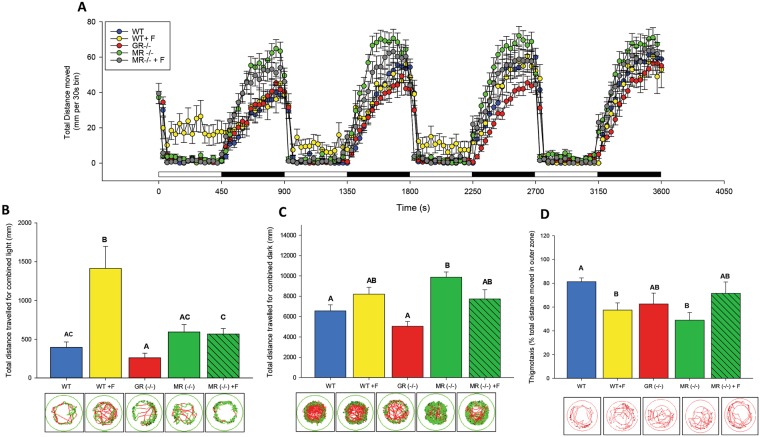Figure 4.
GR and MR are necessary to mediate stress-related behaviour: (A) Behavioural profiles of 96 hpf zebrafish larvae that were either wildtype [WT], wildtype treated with cortisol [WT + F], GR knockout [GR(−/−)], MR knockout [MR(−/−)] or MR knockout treated with cortisol [MR(−/−) + F]. Mean activity in light and dark is represented, where the activity of 96 hpf larvae is expressed as total distance moved during each 30 s recording bin. The total recording period was 1 h with alternating light periods of 7.5 min each. (B) Total combined distance moved (mm) in the light and (C) total combined distance moved in the dark period. Representative tracking data is included under each bar. Bars represent mean ± SEM (n = 24). Different letters indicate significant differences (One-way ANOVA, p < 0.05). (D) Thigmotaxis: Arenas (wells) were divided into inner and outer zones, and the propensity of 96 hpf larvae to stay close to the outer arena wall was expressed as % of total distance travelled (inner and outer arena) in 30 min. Bars represent mean ± SEM (n = 12). Different letters indicate significant differences. Representative paths for thigmotaxis are shown below each bar.

